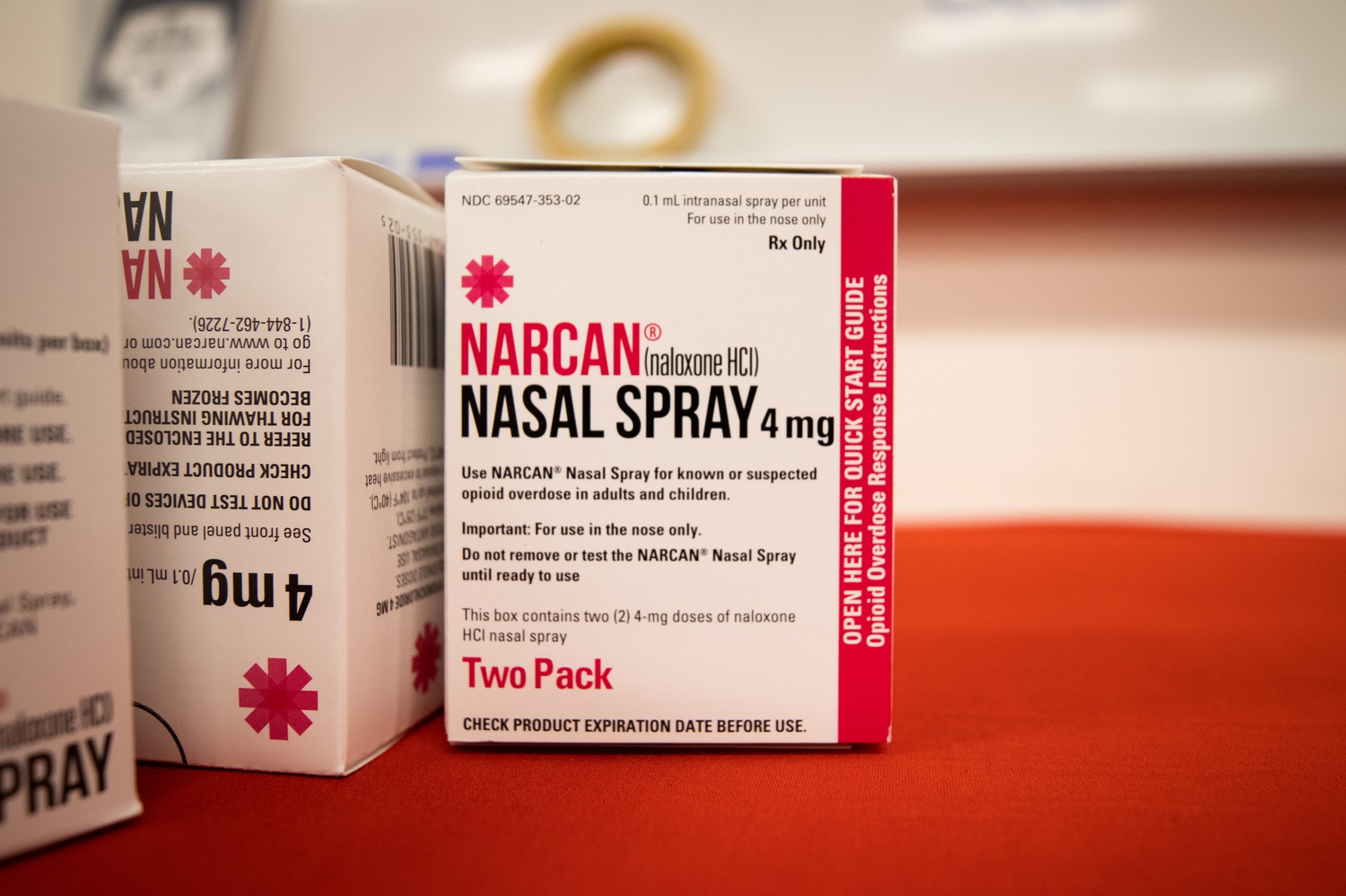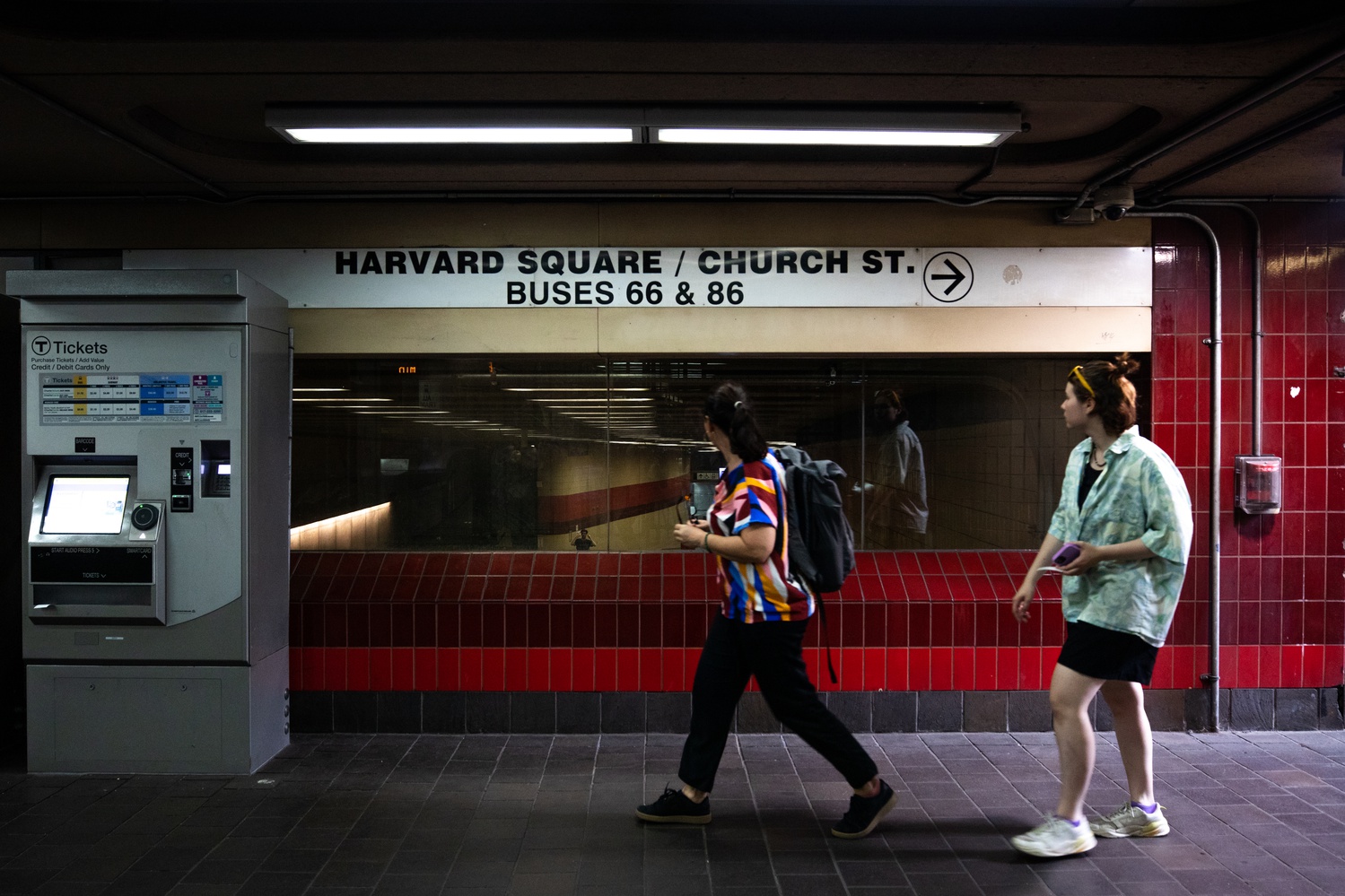Amid Boston Overdose Crisis, a Pair of Harvard Students Are Bringing Narcan to the Red Line
Sajeev S. Kohli ’23 and Jay P. Garg ’24 launched a project to provide three boxes of Narcan at every MBTA Red Line station as part of a 12 to 18-month pilot study. The state legislature voted in July to commit $95,000 in funding to its implementation along the Red Line.
Updated: September 11, 2023, at 2:37 p.m.
When Sajeev S. Kohli ’23 came to Harvard, he watched a tiny container of the intranasal spray known as Narcan save a 19-year-old’s life following an overdose.
Now, Kohli and former classmate Jay P. Garg ’24 are making Narcan readily available along the T’s Red Line — including the station at Harvard Square.
Kohli said he was struck during his time at Harvard — like many students — by the stark visibility of housing and food insecurity around the Square, just outside the gates of Harvard Yard. As a result, he decided to begin working at a nearby homeless shelter — where he witnessed the teenager’s overdose and subsequent revival.
Others at the shelter called 911 and then administered the Narcan they stored on hand, which contains the drug naloxone and can bring someone back to consciousness following an overdose by blocking opiate receptors in the nervous system. According to Kohli, the teenager came out “effectively fine” after its use.
For Kohli, the experience crystallized the power of Narcan.
“That event in particular, really emphasized to me the importance of this small, inexpensive, easy-to-use nasal spray, that can really mean the difference between life and death,” he said.
Overdoses are an increasingly common phenomenon in Boston and across the United States as addictive drugs, particularly synthetic ones like fentanyl, have become more powerful and more dangerous over the last decade, leading to a dramatic rise in overdose deaths.
Soon after, Kohli and Garg launched an initiative to provide public access to Narcan — which now stands on the brink of realization after the state legislature voted in July to commit $95,000 in funding to its implementation along the Red Line.
The program is set to provide three boxes of Narcan at every station along the Red Line — which runs from Alewife through Harvard Square to Boston and its south — as part of a 12 to 18-month pilot study. The initiative will also provide instructions on the use of Narcan and require that stations be restocked daily.
‘Time is of the Essence’
While drug overdoses have long posed a public health threat in the Boston area, the problem has reached epidemic proportions in recent years following the introduction of potent synthetics to the U.S. in the 2010s.
In 2021, Boston declared addiction a public health crisis for the city, and several city councilors are now calling for a state of emergency to be declared at the intersection of Massachusetts Ave. and Melnea Cass Boulevard in the South End.
The area, just a few miles south along Mass. Ave. from Harvard Square, is the center of Boston’s opioid crisis and is a hub of widespread drug use.
“I first started practicing in the early 2000s here in Boston, we’ve always had an issue with heroin,” said Scott G. Weiner, an associate professor at Harvard Medical School and an emergency physician at Brigham and Women’s Hospital who helped advise Garg and Kohli’s project.
“We unfortunately did have people that died from that, but it was tenfold less than what we’re seeing in these years,” he said. “People can take a single pressed pill of fentanyl and they can overdose and die from just one pill.”

After witnessing a potentially fatal overdose himself, Kohli joined the Harvard College Overdose Prevention and Education Students, a campus group dedicated to overdose awareness, including through increasing public availability of naloxone.
In past years, Harvard students have repeatedly sought to bring Narcan to automatic external defibrillator cabinets across campus — though Harvard University Health Services officials have expressed reluctance to make the life-saving medicine available in campus public spaces, citing logistical concerns. To date, the student efforts have not succeeded.
Swathi R. Srinivasan ’21, a former co-director of HCOPES who helped push for naloxone availability on campus, stressed the moral aspect of the work of overdose prevention.
“The goal of a lot of people in this space is to prevent preventable deaths,” she said. “We must — that is our responsibility.”
Opioids can slow down the user’s breathing or stop it altogether, meaning “time is of the essence” when someone overdoses, Kohli said.
“It only takes three to five minutes after experiencing an overdose for irreversible brain damage to occur,” he said.
Expanding Access
While doing policy research for HCOPES, Kohli came across a map that would shape the final two years of his college career — and his subsequent advocacy efforts around overdose prevention.
Contained in a report from the Cambridge Health Alliance, the heat map showed concentrations of overdoses around Cambridge with the Red Line and its stations overlaid — revealing large clusters of overdoses near the city’s five Red Line stations.
“It’s not immediately surprising that that’s the case,” Garg said in an interview, describing the genesis of their initiative. “The T stations are in areas that, they’re highly trafficked.”

Harvard Square — once described as part of Cambridge’s own “Methadone Mile” — contains one such cluster, stretching from the Yard toward the Charles River.
Yet through closer inspection, Kohli and Garg found that overdoses were not only happening in the vicinity of T stations but frequently inside of them, for a combination of reasons.
“They’re dark, they’re secluded,” said Garg. “Some parts of them are not often trafficked by other people or law enforcement, and some of them have elevators or bathrooms that lock but that are publicly accessible.”
From there, the two consulted with experts and frontline workers, from MBTA ambassadors to healthcare providers, first responders, and, eventually, the State House. They partnered with State Senator John F. Keenan ’86, who brought the initiative to the floor of the legislature.
Keenan praised the work of state legislators over the opioid crisis. “The entire legislature has been open to and encouraging harm reduction efforts,” he said.
Despite the political controversy that sometimes accompanies overdose prevention policy — for example, many Republican politicians have called such programs a moral hazard that encourages drug use — Keenan said that “there’s a general sense that this should be as widely available to people” as part of emergency response.
With the initiative now passed into law, Kohli said “the ball is in the court of the T,” which must iron out the remaining logistics before the boxes are installed.
In an emailed statement, Massachusetts Bay Transportation Authority spokesman Joe Pesaturo wrote staff “is working to learn more about this initiative from our public health colleagues and hopes to develop a plan based upon the budget language in the coming months.”
“In the meantime, Transit Police carry Narcan and they are trained in the proper use of it,” he added.
Once the spray is made available in Red Line stations, it will be up to T riders or others nearby to use it if an overdose happens — to work, the pilot needs bystanders to intervene.
David E. Velasquez, a fourth-year medical student and former Eliot House resident tutor who advised Kohli and Garg, said he also witnessed an overdose recovery after encountering a patient — whose brother had administered naloxone in time — during a shift at Massachusetts General Hospital.
“He ended up leaving the hospital,” Velasquez said. “And while I was still on that same day, we get a call that he had overdosed again, now at a T station.”
“But this time, there was no naloxone there. His brother was not there,” he added.
With nothing and no one around to reverse the overdose, the patient died, Velasquez said.
Srinivasan said she hopes Narcan availability will expand to an array of public spaces beyond the Red Line. “We want to see it in libraries. We want to see it on public transport. We want everyone to have access to it,” she said.
—Staff writer Jack R. Trapanick can be reached at jack.trapanick@thecrimson.com. Follow him on X @jackrtrapanick.
